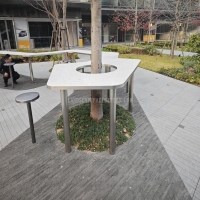Welcome to the website for landscape facilities products and knowledge.
What are the most significant differences between the table’s performance in forested versus open settings?
The performance disparity between tables situated in forested environments versus open settings is both remarkable and consequential. In dense woodland areas, tables face constant challenges from persistent moisture retention, limited sunlight exposure, and organic debris accumulation. The high humidity levels in forested locations accelerate wood deterioration and metal corrosion, while the canopy cover provides partial protection against UV radiation damage. Conversely, tables in open settings endure direct solar exposure leading to rapid material fading and thermal expansion issues, yet benefit from better air circulation that minimizes moisture-related problems.
Forested environments subject tables to biological factors including moss growth, insect activity, and root interference that gradually compromise structural integrity. The uneven forest floor often demands more frequent stabilization adjustments, while falling branches present impact risks. Open area tables confront different adversaries: relentless wind forces test stability, temperature fluctuations cause material contraction and expansion, and the absence of natural cover leaves surfaces vulnerable to extreme weather conditions.
Material selection proves critical in both environments. Forest tables require treatments resistant to moisture and biological decay, whereas open setting tables need UV-resistant coatings and thermal-tolerant components. Maintenance routines diverge significantly - forest tables need regular cleaning to prevent organic buildup and moisture damage, while open area tables demand protective coating renewal and stability checks after weather events. Understanding these environmental distinctions enables better table selection, placement strategies, and maintenance approaches tailored to specific outdoor conditions, ultimately extending functional lifespan and preserving aesthetic quality regardless of setting.
Related search:

Recommendation
An outdoor bar counter with stainless steel and terrazzo materials in an irregular shape